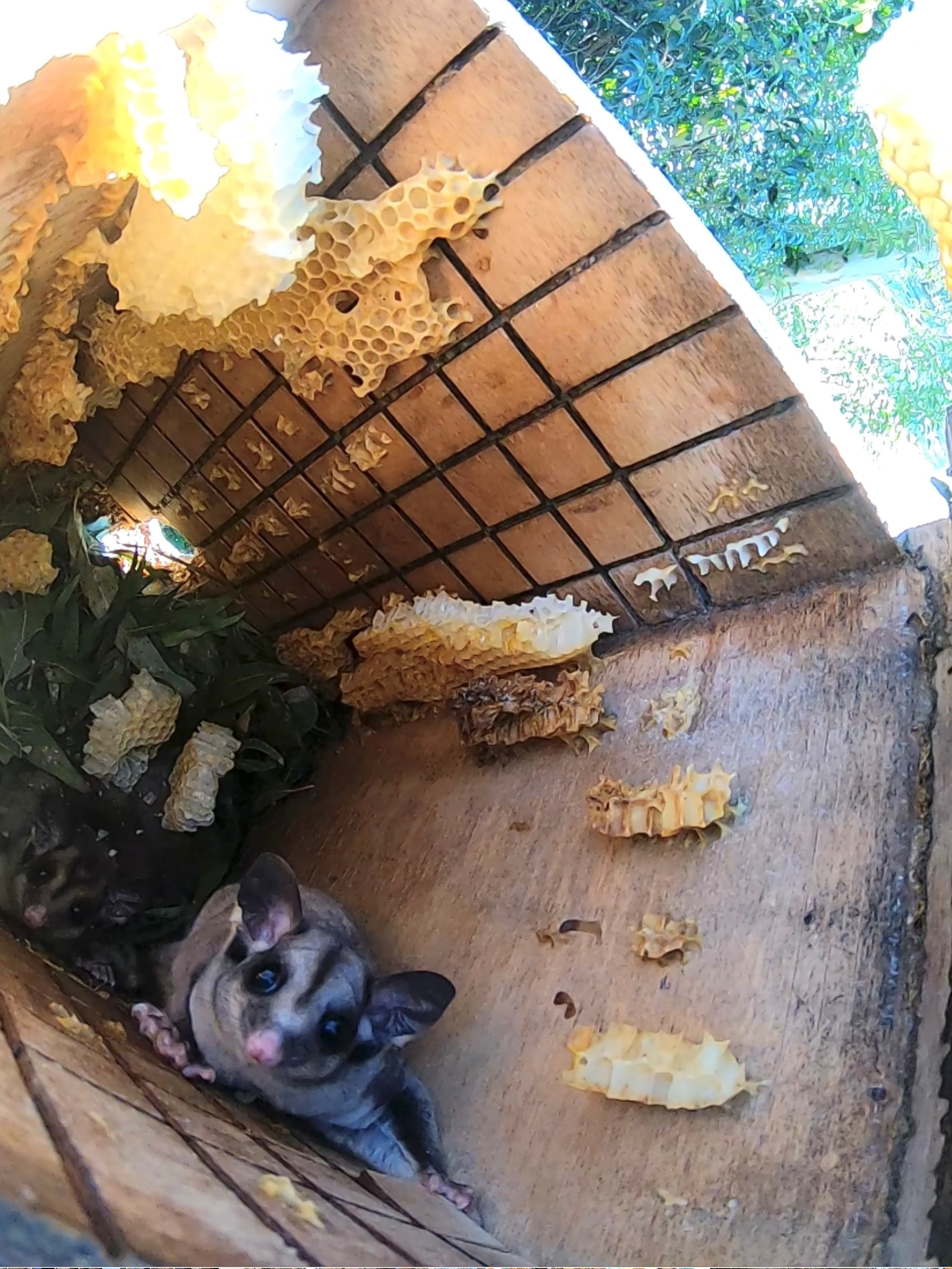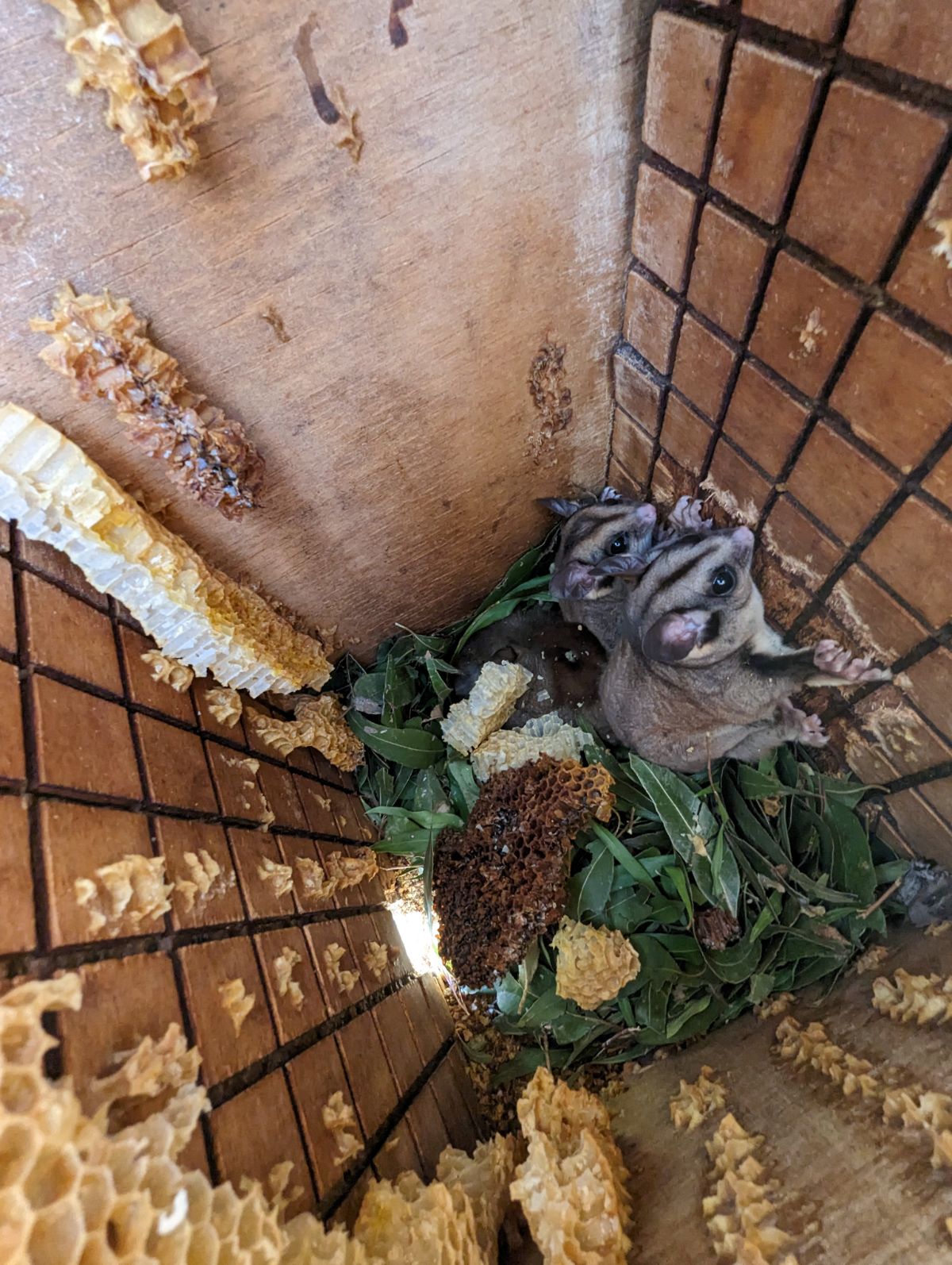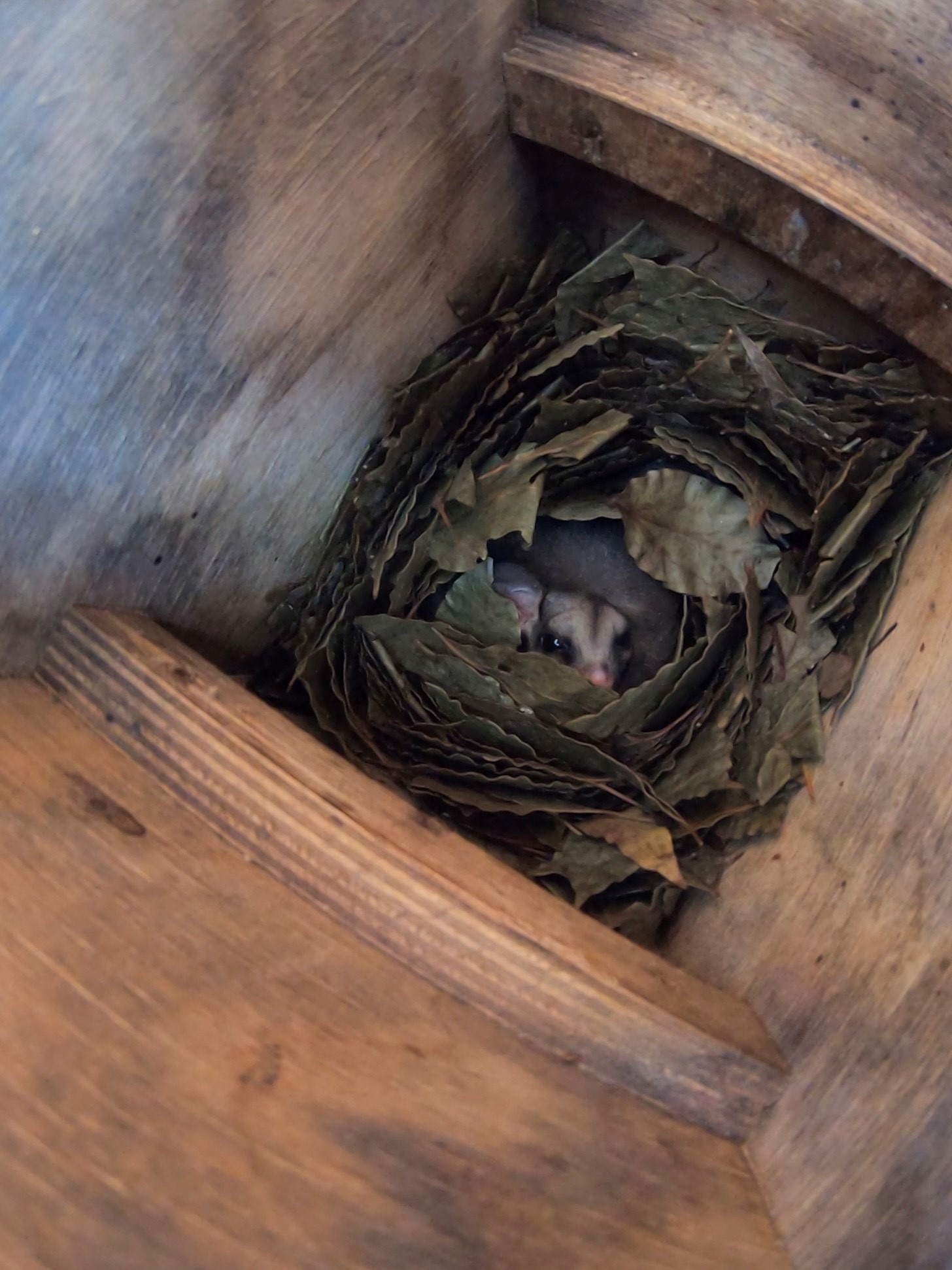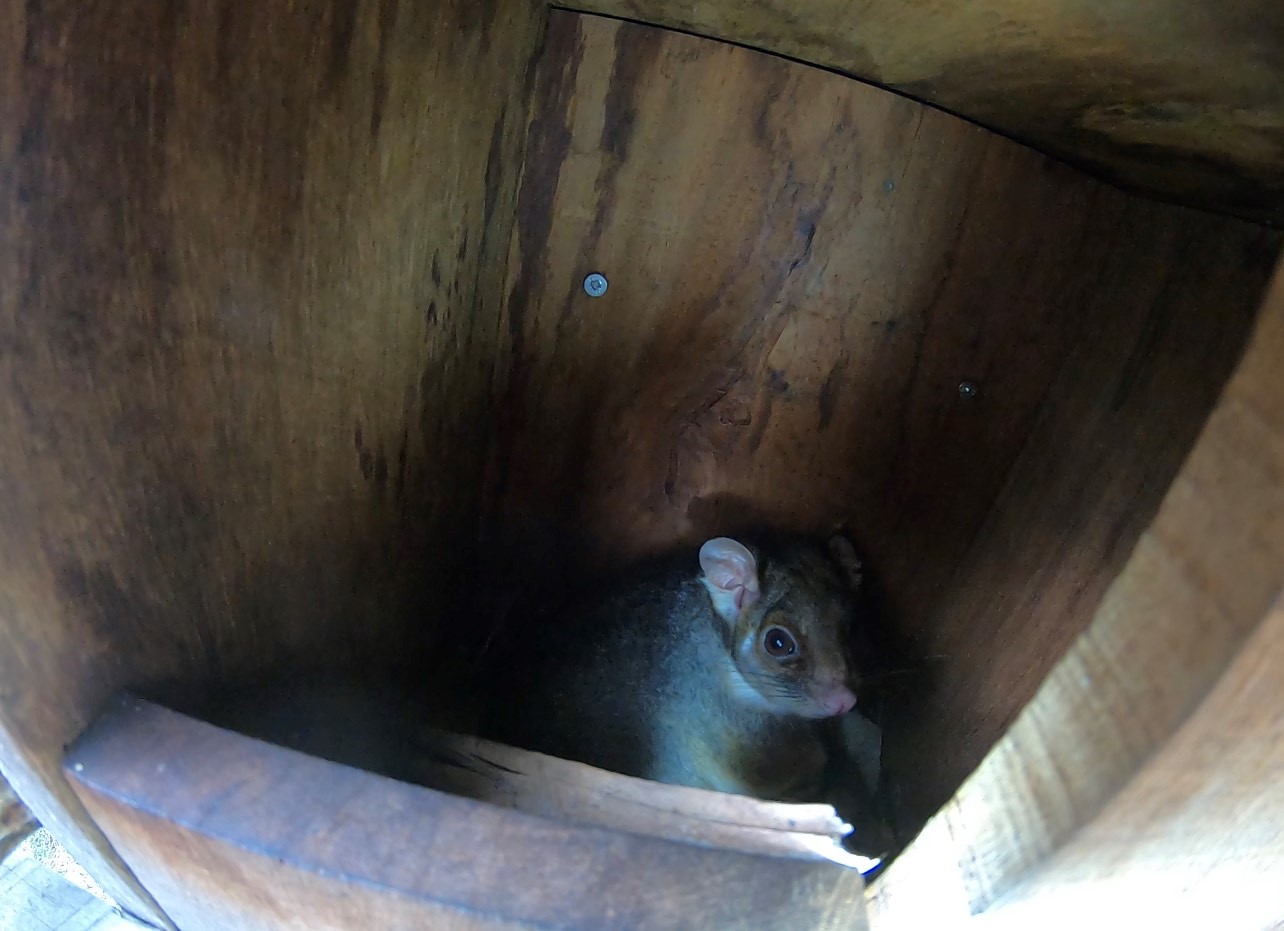Fauna boxes
- Details
- Written by: Teela Griffin Penrith City Council (02) 4732 7777 (02) 4732 7958 council@penrithcity.nsw.gov.au https://www.penrithcity.nsw.gov.au 601 High St Penrith NSW 2750 Australia
In mid-2023, our Bushcare and Biodiversity teams monitored multiple habitat boxes across eight Council reserves. The habitat boxes were designed for a range of species, including gliders, parrots, bats, possums, pardalotes and microbats.
Habitat boxes were installed to combat the increased loss of habitat and old trees in the Sydney Basin Region, with the reserves selected because their native vegetation is endemic to the area, the presence of multiple large trees, and are considered large parcels of bushland. Some of the reserves are isolated and surrounded by housing whilst others have natural corridors connecting onto other large bushland reserves, providing safety for fauna.
During May and June 2023, trained professionals inspected 34 habitat boxes via ladders or tree climbing. They carefully inspected the condition of the boxes as well as confirming whether any fauna were present.
We found the following species within the boxes: sugar gliders, ringtail possums, potter wasps, huntsmen spiders, caterpillars, eucalypt leaf beetles, bush cockroaches, white cedar moths, ants, and parasitic wasps. Multiple boxes had evidence of introduced bees inhabiting them and one had evidence of a skink!
Why did we install fauna boxes in our reserves?
Projects to re-introduce vegetation and replicate hollows in urban areas have become increasingly important with the many remnant, old, hollowed trees around urban areas being removed. With tree hollows taking a minimum of 100 years to form, the installation of nest boxes, whilst not as good as an old remnant hollow, allows the instant re-introduction of a nesting option. Ongoing research into the effectiveness of artificial next boxes will continue.
Why do we inspect the fauna boxes?
Information on what species occupy these boxes provides insight into species using the reserves, effectiveness of boxes and species behavioural ecology. Knowing this information helps us better plan our conservation initiatives, and lets us know which animals are frequenting our reserves.
Which reserves have fauna boxes?
- Mountain View Reserve, Cranebrook
- Schoolhouse Creek, Regentville
- Dorothy Radford Reserve, St Clair
- Central Tree Reserve, Glenmore Park
- Bellbird Reserve, Emu Heights
- Werrington Creek Reserve, Werrington
- Peppermint Reserve, Kingswood
- South Creek, St Marys
Habitat Boxes – Climber inspection
A trained tree climber inspecting boxes.
Source: Cumberland Plain Regeneration – Adrian O’Hara
A few of the fauna box residents

Source: Cumberland Plain Regeneration – Adrian O’Hara
A Sugar Glider has called this habitat box home at South Creek, St Marys.

Source: Cumberland Plain Regeneration – Adrian O’Hara
A bed of fresh leaves makes this box home for a pair of Sugar Gliders.

Source: Cumberland Plain Regeneration – Adrian O’Hara
A cosy home created in one of the habitat boxes at Bellbird Reserve, Emu Plains. A group of Sugar Gliders gathered in the middle of the box, snuggled among one another. This sleepy glider seems unfazed by the inspectors.
Leaves are gathered from nearby trees and brought into the home for insulation. The leaves in this box appear to be dry, suggesting this family has called the box home for some time. Without habitat boxes like this one, Gliders need large old trees with hollows to construct a nest inside.

Source: Cumberland Plain Regeneration – Adrian O’Hara
A disgruntled Eastern Ringtail Possum (Pseudocheirus peregrins) was not too happy with its unannounced visitor at Mountain View Reserve. The nocturnal species was alerted by the commotion of the tree climber as they prepared their ascent to the nest box location. The inspector did their best not to disturb it further while capturing this photograph.

